Content is essential for successful digital marketing, as it allows marketers to reach their target audience and facilitate brand communication. In addition, content serves as a way to inform, educate, engage, and inspire potential customers while also helping brands to build trust and establish credibility.
It also helps to draw attention from search engines and allows businesses to stand out from the competition by providing valuable information that ranks in search engine results pages (SERPs), aka SEO.
Content also provides an opportunity for businesses to foster relationships with customers, create loyalty and drive conversions. Ultimately, content is one of the most powerful tools in a company’s digital marketing arsenal.
Content marketers use several types of content as per the sales funnel to engage with the customers and help convert better.
We’ll put light on the two most important segments of content, the top of the funnel and the bottom of the funnel.
Already scared? Don’t worry; I’ll explain them in a manner that even 5th-grade students can understand.
What is the Top of the Funnel?
Top of the funnel (TOFU) is a term used in digital marketing (also in traditional marketing) to refer to the early stages of the customer journey when customers are first exposed to a brand and begin researching its products or services.
At this stage, customers are looking for general information and may not yet be ready to purchase. During TOFU, businesses employ various strategies to capture customer attention and encourage them further down the sales funnel. These strategies include content marketing, SEO, paid to advertise, and more.
TOFU content is an important part of digital marketing and is typically used to capture customer attention and introduce them to a brand or product. Hence, this content should be informative, engaging, educational, and inspiring.
Examples of top of the funnel content include blog posts, videos, infographics, eBooks, podcasts, webinars, and more. This type of content should focus on introducing customers to a brand or product in order to help them learn more about it and move further down the sales funnel.
Let’s know the TOFU content types:
1. Blog Posts
Blog posts are a great way to provide valuable content to your potential customers. They can be used to share information about your product or service, discuss industry news, or even offer helpful tips and advice.
For example, if you own a pet food company, you could write blog posts about proper nutrition for cats and dogs. This will help establish you as an authority in the space and provide useful information to customers.
You can explore my blog section to know more: Madhukar Jangir Blog
2. Videos
Videos are among the most effective way to engage with potential customers and create excitement around your brand.
For example, you could use them to show off new products by creating how-to videos or product demonstrations that explain the features and benefits of what you offer.
More importantly, videos are great for SEO as they can draw attention from search engines and help drive organic traffic to your website.
Here is an example of HubSpot using videos for marketing:
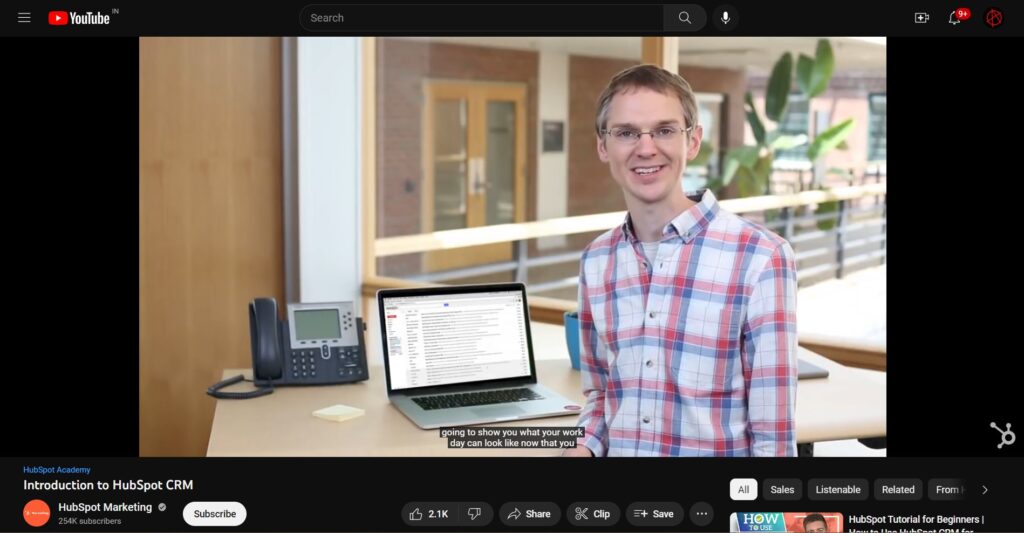
3. Infographics
Infographics are visual aids that use imagery, charts, and graphics to tell a story or explain concepts quickly and easily. They can be used in various ways, such as explaining complex data points or showcasing customer success stories in a visually appealing way.
Infographics not only help educate customers but also look good when shared on social media sites like Twitter and Instagram, which can increase the visibility of your brand and social media engagement.
See for yourself how a beauty brand have leveraged infographics marketing to spread awareness.
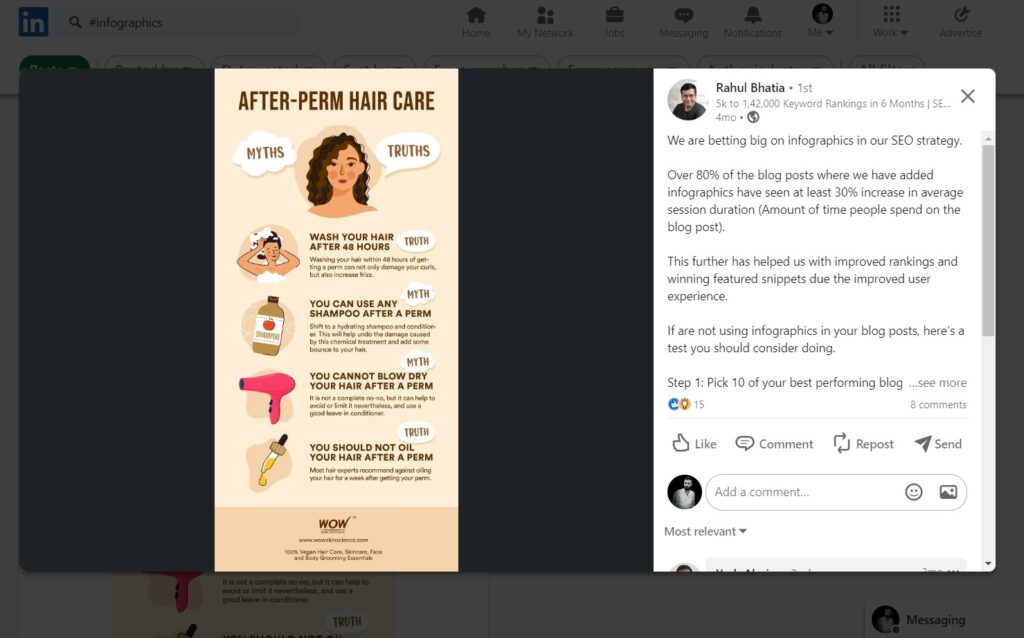
4. Podcasts & Webinars
Podcasts are audio files typically hosted as series where each episode covers a different topic related to your business or industry news that listeners can download or stream on their phones or computers while they go about their day-to-day activities, such as commuting or exercising.
You could use podcast interviews with experts in the field to talk about specific topics related to the products/services you offer, which can help build trust with potential customers by providing valuable information in an entertaining manner.
For instance, Himani Kankaria is very active on online conferences, which helps her position herself as an expert and drive more leads for her SEO-focused digital marketing business.
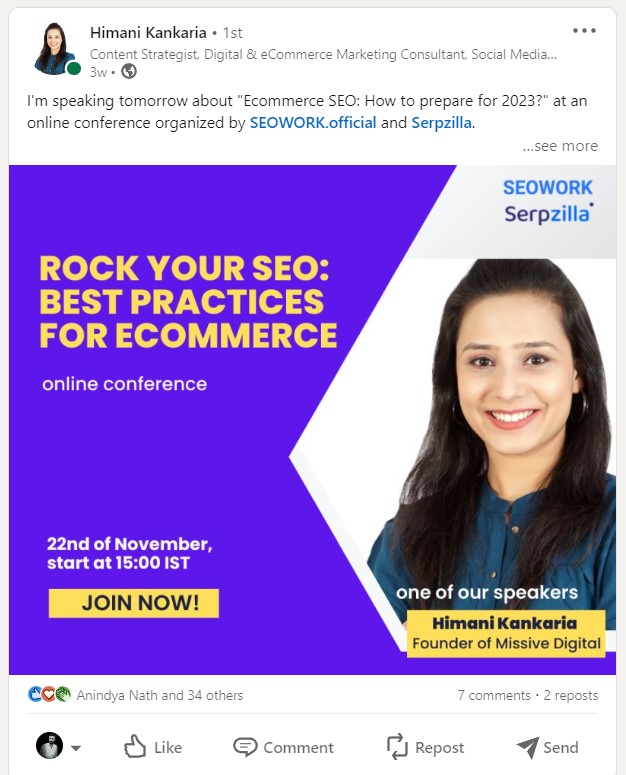
5. EBooks
EBooks are another form of content that companies often use for digital marketing purposes, such as lead generation campaigns where readers opt-in for a free eBook that’s filled with useful information related to what they’re interested in learning more about (e.g., how to start a business). EBooks can also be used as lookbooks or catalogs showcasing different products/services, along with providing insights into why they’d benefit potential customers.
Here is an eBooke published by Semrush.
6. Social Media Posts
Social media is one of the most important channels for businesses when it comes to content marketing because it’s one of the easiest ways to reach large groups of people quickly without having much money spent on advertising costs compared to other forms of advertising (e., TV ads). Brands should create interesting as well as relevant posts that captivate their target audience while also providing value by sharing helpful tips, industry news, relevant quotes, etc.
Brands like Samsung leverage the social platform to launch new products, promote discounts, and roast competitors (if you know what I mean):
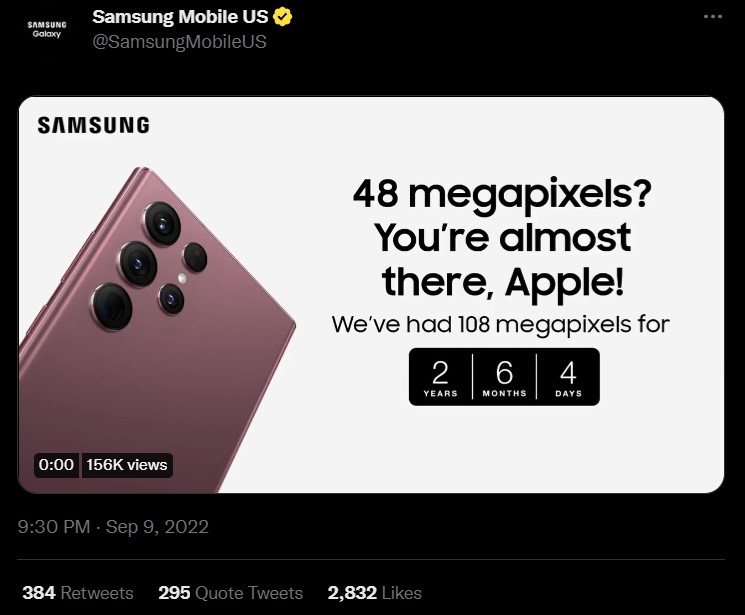
7. Quizzes & Assessments
Quizzes & assessments allow businesses to engage users on their websites by giving them personalized results based on their answers, creating an interactive experience that keeps people engaged longer than if just text alone.
This is especially important when trying to drive conversions through website visits because users who stay more engaged tend to convert better than those who don’t stay long enough.
Additionally, quizzes & assessments provide invaluable insights into customer behavior that companies can use to improve user experiences going forward and increase conversions.
8. Whitepapers
Whitepapers are long-form documents typically written by experts within specific fields who discuss particular topics in detail, usually including research findings.
Companies often produce whitepapers, explore new ideas, and promote certain concepts to give readers a deeper understanding of a particular topic. By tackling complex topics in more depth, whitepapers help demonstrate credentials authority and position company authority within its industry. Additionally, whitepapers tend to rank well in search engine result pages, giving you more visibility.
9. Online Courses
Online courses allow businesses to teach others certain skills within product service area expertise. It gives them a chance to educate customers and further incentivize purchases by offering something valuable in exchange for making purchasing decisions easier. Additionally, online courses are great opportunities to form relationships, make users come back, connect community build loyalty around your brand.
Some great examples of this TOFU content types are HubSpot, Salesforce, and UiPath certifications.
Also Read: Top 5 AI Assistants for Content Writers
What is the bottom of the funnel?
Bottom-of-the-funnel (BOFU) activities are those that take place once a customer has expressed interest in a product or service. They involve activities such as signing up for a newsletter, attending an event, downloading a whitepaper, or taking an online course.
These activities generally require more commitment from the customer and are designed to convert customers into paying customers.
Content plays a key role at the bottom of the funnel. Relevant, high-quality content can provide the information and insight that a customer needs to make an informed purchase decision.
Content such as product pages, comparison pages, long-form alternative blogs, case studies, and sales-oriented blogs, can help customers learn about the product or service and further inform their decision-making process.
Content can also help build relationships with customers and create loyalty around a brand by showcasing expertise and providing helpful advice. Businesses can increase customer engagement, conversions, and sales by providing quality content at the bottom of the funnel.
1. Product Pages
Product pages are web pages that provide detailed information about a specific product or service. They typically include images, descriptions, pricing information, and customer reviews.
Product pages play an important role at the bottom of the funnel by providing customers with the necessary information to make their purchase decision. Given insights into the product, customers can make more informed decisions about which product is best for them.
For example, suppose a customer is looking to buy a new laptop. In that case, they may visit the product page of several different manufacturers and compare features such as processor type, RAM size, graphics card type, and storage capacity. By seeing all of this information in one place on the same page, customers can make an informed decision about which laptop is best for their needs. Additionally, some product pages may include customer reviews or ratings (sometimes via Instagram) that can help sway potential buyers in one direction or another.
2. Product Comparison Pages
Product comparison pages are web pages that allow customers to compare different products side-by-side in order to make an informed purchasing decision. They typically include detailed product information such as features, pricing, availability, and reviews. Product comparison pages play an important role at the bottom of the funnel by helping customers decide which product best meets their needs.
For example, a customer who is shopping for a new laptop may visit a product comparison page that lists various models side-by-side. The customer can then compare features such as processor type, RAM size, storage capacity, and battery life to determine which model best suits their needs. The customer may also compare prices from different retailers or read customer reviews to better understand which laptop is worth investing in.
This way, product comparison pages provide customers with all the additional information they need to make a confident purchase decision at the bottom of the funnel.
3. Long-Form Product Alternative Blogs
Product alternative blogs feature reviews, comparisons, and recommendations of different products in a particular category. These blogs typically focus on a particular product category or industry, such as technology, home goods, beauty products, or health supplements.
Product alternative blogs play an important role at the bottom of the funnel when it comes to making purchase decisions. Product comparison blogs can help potential customers make clever decisions about what to buy by providing detailed information about different products. Additionally, these blogs can provide an unbiased opinion about specific products and brands that may not be available from other sources.
Product alternative blogs also often feature discounts or coupons that can help customers save money on their purchases. This can be especially helpful when buying big-ticket items like electronics or appliances.
In short, product alternative blogs can be incredibly useful at the bottom of the funnel when it comes to helping customers make informed decisions about what to buy and where to buy it from.
You can either ask your content writer to create alternative blogs and list your product at the top or can collaborate with a blog that has a large audience.
4. Case Studies
A case study is essentially telling a story through data, which many companies overlook when it comes to digital marketing. Still, studies have proven them effective tools when trying to capture the attention of potential customers.
They allow companies to showcase success stories or their own customer’s successes stories so readers have real-life examples to understand what makes the company unique, offering something no one else has. This type of content also helps build trust because readers see actual results instead of just being told they will get something if they invest in a product/service.
Also Read: 5 Silly Mistakes New Content Writers Often Make
Special Note for Content Writers
Every content type has its own purpose, and content writers should understand that clearly. I’ve seen many mediocre writers putting TOFU content while creating SEO-optimized landing pages. This is an obvious mistake, as the SEO team requires long-form content within the landing pages to rank better.
Here, the writers need to understand that. If they brainstorm on the customer pain points and the solution the product offers, they can create highly engaging long-form content that is perfect for the bottom of the funnel.

I’m a marketer turned into a content writer. I go the unconventional paths of content writing to explore the horizon of possibilities and novel approaches to help brands communicate.
If you’ve loved reading this blog, hit me a ‘Hi’ on LinkedIn.
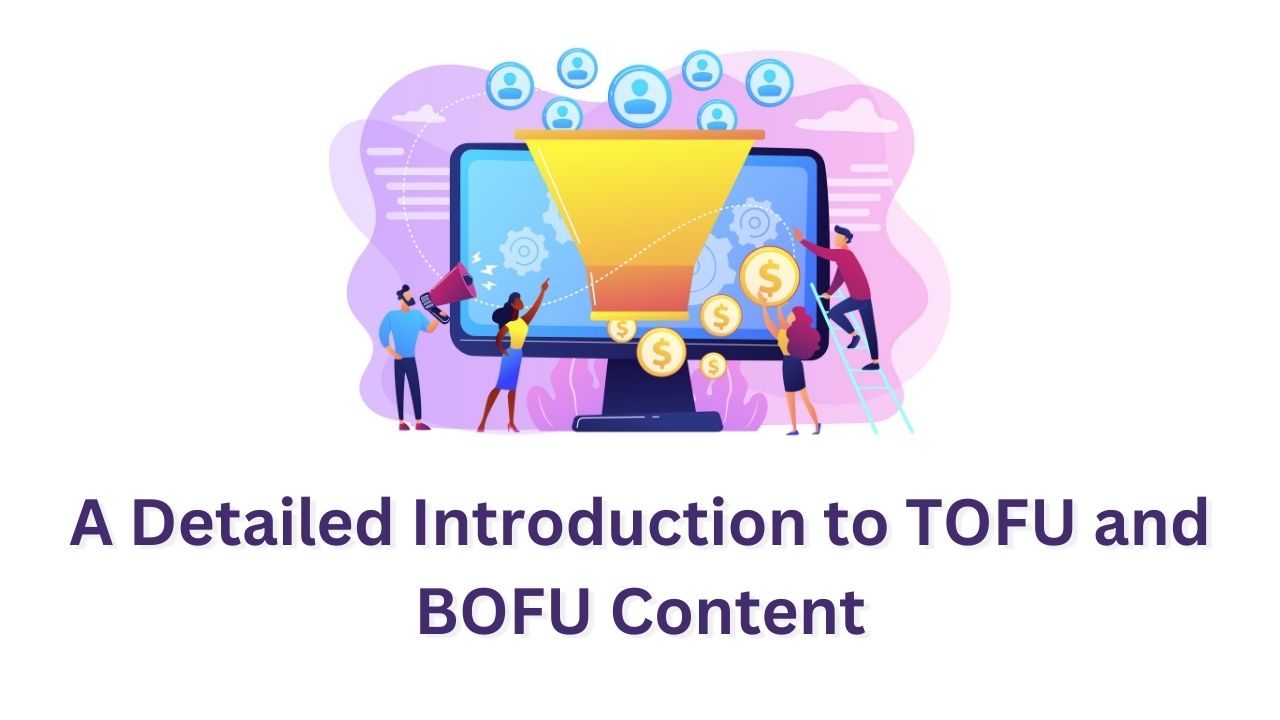
5 thoughts on “A Detailed Introduction to TOFU and BOFU Content Types”